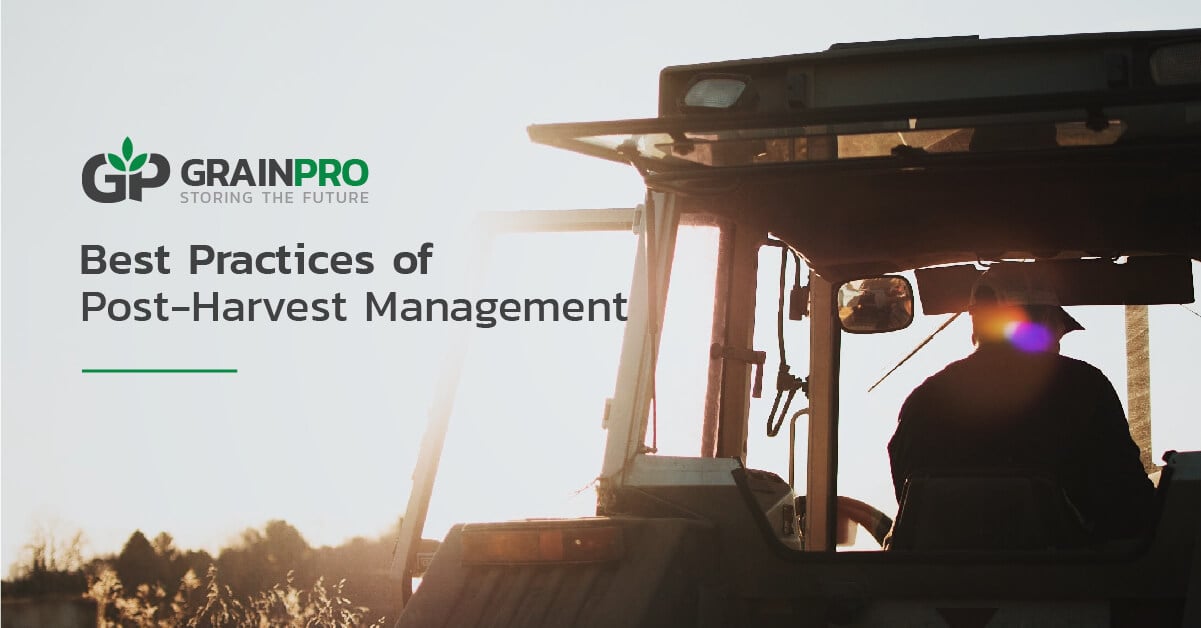Best Practices: The Post-harvest Management Process

If you're working on an agribusiness, you're probably familiar with post-harvest practices. This means your business handles, transports, stores, or processes crops like coffee, cocoa beans, rice, wheat, spices, fruits, or vegetables.
This is not an easy task and there are plenty of risks and hazards that you have to keep in mind, so here are some best practices to help you succeed.
Best practices in post-harvest management
Know everything you can about your commodity. This may seem like a basic step to farming in general, but it can be surprising to some that different crops have different needs. If you're a coffee farmer, you definitely can't store your products the way a maize farmer does. Treating your crops the way others treat theirs can cause problems for you in the long run.
It's a great practice to research about your crop regularly so you'll be up to date with the latest developments and even technologies you might be able to use.
Also, remember that data is key to improving your post-harvest system. So take into account all the relevant metrics, quality indicators, and standards of your crops. This can be moisture content at different stages, volume during the drying process, or taking samples from different plots or trees. Measure these numbers constantly and consistently.
Aim for peak quality. Your agricultural business is important because it provides sustenance for the communities around you or even to people around the world. This is why it's a best practice for your business and for those consuming your crops if you aim for peak quality. Taking steps to achieve this means being deliberate, meticulous, and precise during all the steps in your post-harvest process.
Look at the standards in your industry and try to achieve or outdo those standards. It might take a while and a whole lot of trials, but it will be worth it.
Strengthen sustainability in your processes. You can start doing this by aligning your goals with the United Nations' Sustainable Development Goals (SDGs). Helping supply safe food while reducing food losses can help achieve SDG 2, which is Zero Hunger. Another SDG that you can align with is SDG 12: Responsible Consumption and Production. You can do this by using environmentally friendly materials such as organic fertilizers. You can also look into lessening your energy consumption or completely converting to clean energy.
Related: Reducing Environmental Risks Through Post-harvest Systems
Don’t take losses for granted. Many businesses in the agricultural sector take post-harvest losses as part of their operations. Indeed, these losses cannot be 100% avoided, but some methods lessen the chances of spoilage or wastage. Don’t let your business take post-harvest losses as a given. Instead, learn how to cut back those losses and retain the volume of your crops.
You can do this by directly addressing the root cause of your post-harvest losses. Find out if insects are a big part of the problem, or if mold growth is forcing you to throw out part of your products. Then, find the perfect solution that help you fix that problem. Better yet, use the solution that will let you protect your crops from insects and molds at the same time.
Prepare for the worst. Have contingency plans and back-ups. This is especially important if your business deals with machinery such as mechanical dryers or forklifts for loading. Having at least one back-up to your machines can save time and money.
Having fail-safes within your facilities is a must if you want to achieve a better post-harvest system. This means you need to prepare for possible power outages, sudden weather changes, and even natural disasters such as flooding, typhoons, or extreme heatwaves, to name a few. This can be done by purchasing back-up generators and climate-smart storage solutions.
Additionally, you can also use protective packaging when storing or delivering your crops. Explore tools that can help preserve your yield to avoid incurring losses.
Be creative and collaborative. This is crucial especially if you have a restricted budget or facilities. Having the best post-harvest management system means improvising with what you have and getting things done despite the constraints you face.
It's also important to keep learning new techniques that can be helpful in your processes. Don't be afraid to explore new ideas and engage with new people in your industry.
Taking these steps can improve your post-harvest management processes. Together with proper pre-harvest preparations and strong harvesting practices, you can cut costs, preserve yield, and achieve a sustainable business.
GrainPro's drying, transport, and storage solutions aim to help your post-harvest management through cost-effective and climate-smart hermetic technologies.
To learn more about these solutions, click the button below.
Related:
Understanding Post-Harvest Management: Importance, Challenges, and Solutions
8 Great Ways Hermetic Techhnology Can Help Your Agri-Business
